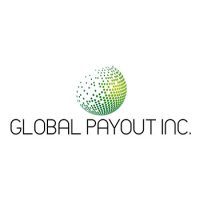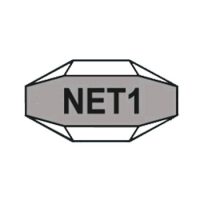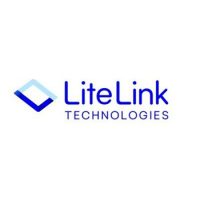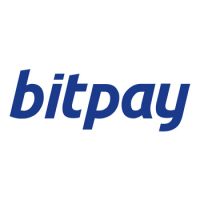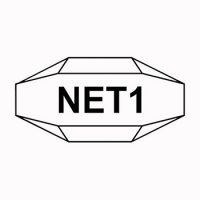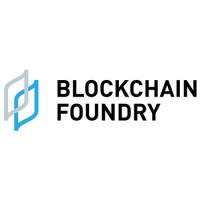Blockchain
Artprice: Big Is Beautiful! Expected Record at New York Auction for Louise Bourgeois

 Reading Time: 3 minutes
Reading Time: 3 minutes
One of Louise Bourgeois’s six Spider sculptures, measuring more than 7 meters across and 3 meters tall, will be offered for sale at Christie’s on 15 May 2019 in New York. Numbered 3/6 in the series, the work already fetched $28.2 million in 2015 and Louise Bourgeois’s prices have stayed steady since then.
It could become the most expensive artwork by a female artist ever sold at auction.
“Like it or not, when it comes to art, size is very important. Giant works fascinate us because they transcend our own scale. Who isn’t impressed by huge paintings like Pablo Picasso’s Guernica (at the Reina Sofía Museum in Madrid) or Veronese’s Les Noces de Cana (at the Louvre Museum in Paris)?” says thierry Ehrmann, Artprice’s Founder/CEO.
In general, an artist’s largest works attract the strongest demand. For equivalent quality, the larger works will almost always be worth more than the smaller works.
This week, Artprice picks out a selection of 10 monumental works auctioned in 2018 in each of the major artistic mediums.
PAINTINGS
Zao Wou-Ki – Juin-Octobre 1985
10 x 2.8 meters
On 30 September 2018, Zao Wou-Ki’s Juin-Octobre 1985 triptych – his largest work still in circulation – caused a major sensation when it was re-offered for sale at Sotheby’s. In May 2005, Christie’s sold the same work in Hong Kong for $2.3 million. Thirteen and a half years later, its value exceeded $65 million, i.e. no less than 28 times its previous value.
Mark Bradford – Helter Skelter I (2007)
10 x 3.65 meters
American painter Mark Bradford had a particularly good year in 2018. In 2017, he represented the United States at the Venice Biennale. But it wasn’t until the first half of the following year that his prices began to inflate rapidly, generating three new auction records.
On 8 March 2018, his Helter Skelter I (2007) came close to $12 million at Phillips in London. This huge piece was a key element in the exhibition Collage: The Unmonumental Picture organized by the New York Museum in New York in 2008.
Osgemeos – It is Supposed to be Raining But… (2008)
2.5 x 2.5 metres
This large format canvas allowed the Brazilian duo of graphic artists to express their art in superb style. Accustomed to large facades, the two street artists have produced a large number of reasonably dimensioned paintings for the market. However, their very large canvases capture all the power of their street art. On 26 June 2018, the painting fetched $132,000 at Phillips in London.
DRAWINGS
Takashi Murakami – Dragon in Clouds-Red Mutation (2010)
18 x 3.6 meters
Takashi Murakami’s imaginary world stands at the crossroads of manga culture and Sino-Japanese mythology. In April 2018, the auction house Council sold one of his three large-scale interpretations of Asia’s most popular mythical creature, the dragon. His colossal drawing – red ink on paper – titled Dragon in Clouds-Red Mutation seduced Chinese collectors in Shanghai, fetching more than $8.8 million.
Giuseppe Bezzuloli – Folly driving the cart of Love
481 x 344 cm
Commissioned in 1848 to paint the ceiling of the Palazzo Gerini in Florence, Giuseppe Bezzuloli executed this study on the theme of Love and Madness. The final fresco still adorns the ceiling of the famous Tuscan Palace.
Estimated between $50,000 and $80,000, the drawing was purchased for $275,000 at Christie’s in New York on 30 January 2018. Nowadays, very large-scale historical works are extremely rare on the market and this post-Renaissance drawing – which still retains all its power – was a superb acquisition.
SCULPTURE
KAWS – Clean Slate (2014)
5.5 x 5.5 x 7.5 meters
Kaws is currently an in vogue artist par excellence… from New York… to Hong Kong. The American street artist has conquered the international art market with his colorful paintings, his large-scale figurines and his monumental sculptures. Clean Slate (2014) was shown all around the world (Shanghai, Ibiza, Hong Kong and Fort Worth) before being put on sale by Phillips in New York, where it was acquired for nearly $2 million.
Philippe de Buyster (Attrib.) – Vierge de pitié (c.1650-60)
1.6 x 0.5 x 1.3 meters
This 17th century Pietà was one of the very few large-scale Old Master works sold last year. In perfect condition, the terracotta sculpture came from the Chapel of Château d’Autricourt in Burgundy (France). Christie’s sold the piece for $58,000 (including costs) in Paris on 19 June 2018.
Joana Vasconcelos – Betty Boop (2010)
4.1 x 1.5 x 3 meters
This huge high-heeled shoe made of stainless steel pots and concrete is a perfect example of Joana Vasconcelos’s taste for oversize. The Franco-Portuguese artist has never been afraid to invest large places like the Bon Marché department store in Paris or the Palace of Versailles where Betty Boop (2010) was presented in the Hall of Mirrors in 2012.
PHOTOGRAPHY
Gilbert & George – Thirty-Five Locations (2003)
422 x 361 cm
The British duo Gilbert & George is not doing as well on the secondary market as in 2008, but their unique large-format photos continue to fetch very good prices. Consisting of 24 rectangular sections, Thirty-Five Locations resembles a huge stained glass window in black, white and red. It was the largest photographic work sold during 2018 and fetched $150,000 at Sotheby’s in New York (17 May).
MIXED MEDIA
Tracey Emin – Dark Dark Dark (2007)
3.6 x 1.6 x 1.5 metres
In 2007 Artwise commissioned Tracey Emin to customise four Fiat 500s (each unique) for a charity sale. On 5 December 2018 at Phillips’ New Now sale, one of them fetched $8,000. In the catalogue Phillips warned Please note this lot is offered as an art work, and not a motor vehicle…
The use of motor vehicles as an artistic medium may seem bizarre, but several major artists have lent themselves to the exercise in the past. The BMW Art Car project, for example, allowed Andy Warhol, David Hockney and Jeff Koons to completely transform the exteriors of cars.
Copyright ©2019 thierry Ehrmann – www.artprice.com
Try our services (free demo): https://www.artprice.com/artist/23640/baishi-qi
Subscribe to our services: https://www.artprice.com/subscription
SOURCE Artprice.com
Blockchain
EAT & BEYOND ANNOUNCES PROPOSED NAME CHANGE AND UPDATED INVESTMENT POLICY
Blockchain
Blocks & Headlines: Today in Blockchain – May 30, 2025 (Fraser Edwards, Kyiv NFT, Spirit Blockchain Capital, Indian eHealth, Hedera)

Blockchain technology and cryptocurrencies continue to redefine industries—from competitive gaming and cultural heritage preservation to corporate finance, healthcare, and alternative tokens. Today’s briefing highlights five pivotal developments shaping the ecosystem: Fraser Edwards’s vision for trust in eSports; Ukraine’s wartime cultural preservation via NFTs; Spirit Blockchain Capital’s Q1 2025 operational report; India’s push for blockchain-enabled electronic health records (EHRs); and the rise of viral altcoins such as UniLabs, Sui, and Hedera Hashgraph. Together, these stories illustrate the themes of trust and identity, preservation and provenance, institutional maturation, public-sector innovation, and token diversification. In this op-ed–style round-up, we distill the essence of each story, cite sources, and offer analysis on how they advance Web3, DeFi, and NFT frontiers.
1. Rebuilding Trust in eSports: Can Blockchain Fix Competitive Integrity?
Source: CCN
Summary:
In a recent CCN interview, veteran trader and eSports investor Fraser Edwards argues that blockchain’s immutable ledgers can restore credibility in the rapidly commercializing world of competitive gaming. According to Edwards, match-fixing scandals and opaque prize-pool distributions have eroded fan confidence. By tokenizing tournament entries and payouts on public blockchains—complete with smart-contract–enforced escrow—organizers can guarantee that prize monies are distributed exactly as advertised, and that no post-match manipulation occurs. Tournament operators in Asia and North America are already piloting Ethereum-based payout dApps, aiming to increase transparency for players and sponsors alike.
Key details & analysis:
-
Smart-contract escrow: Funds are held in a time-locked contract that releases prize money only upon verifiable match results. This prevents disputes over referee decisions or delayed payments.
-
On-chain reputation: Player and team reputations can be tokenized via non-fungible reputation badges that accrue based on fair play and community votes—discouraging cheating.
-
Scalability concerns: High-traffic tournaments may require Layer 2 rollups or alternative chains (e.g., Polygon, Immutable X) to reduce gas costs and latency.
Opinion: Blockchain’s dual promise of provable fairness and programmable finance makes it uniquely suited to eSports. Yet adoption hinges on UX: seamless wallet integrations, minimal transaction fees, and clear regulatory guidance on esports tokens.
2. When Art Meets Blockchain: Ukraine’s Wartime Cultural Preservation
Source: The Kyiv Independent
Summary:
As monuments crumble under artillery fire, Ukrainian curators and technologists are partnering to mint NFTs representing lost or endangered artifacts. The Kyiv Independent reports that the National Art Museum of Ukraine has launched “Project Phoenix,” tokenizing high-resolution 3D scans of sculptures, manuscripts, and paintings. Proceeds from initial sales fund restoration and digital archiving efforts. Each NFT embeds provenance metadata—including GPS coordinates, curator notes, and condition reports—ensuring that future generations can verify authenticity and context, even if the physical artifact is destroyed.
Key details & analysis:
-
Metadata richness: Beyond simple ownership, NFTs store structured metadata—using ERC-721 metadata extensions—that capture curatorial insights and conservation logs.
-
Decentralized archives: IPFS and Arweave are employed to host ultra-high-resolution imagery, with on-chain hashes guaranteeing data integrity.
-
Community engagement: Fractional-NFT drops allow diaspora communities to collectively own tokens, strengthening cultural ties and crowdfunding preservation.
Opinion: Blockchain’s ability to immutable record heritage provides a lifeline for war-torn nations. However, ensuring that local institutions retain governance over metadata edits and future migrations is critical to avoiding “cultural colonialism” by global NFT marketplaces.
3. Spirit Blockchain Capital’s Q1 2025 Highlights: Growth, Investments, and Outlook
Source: GlobeNewswire
Summary:
Spirit Blockchain Capital’s Q1 2025 report benchmarks the firm’s operational milestones and financial performance. Assets under management (AUM) climbed 45% to $1.02 billion, driven by strategic allocations to top-tier Layer 1 and Layer 2 protocols, DeFi liquidity pools, and a newly launched token-index fund. Operating income rose 37%, fueled by management fees and performance incentives. The firm also closed its second blockchain-focused venture fund at $150 million, earmarked for early-stage Web3 projects in gaming, infrastructure, and decentralized identity.
Key details & analysis:
-
Diversification strategy: 60% of AUM in blue-chip cryptocurrencies (Bitcoin, Ethereum); 25% in DeFi (Aave, Uniswap, Lido); 15% in tokenized commodities and NFTs.
-
Fund performance: The flagship fund delivered a 9.8% return in Q1, outperforming the 6.2% benchmark set by the Bloomberg Galaxy Crypto Index.
-
Venture investments: Early stakes in zero-knowledge proof startups and decentralized storage platforms signal confidence in scalability and privacy innovations.
Opinion: Spirit’s robust growth and disciplined diversification mirror institutional maturation in the blockchain asset management space. As regulatory clarity improves, expect further inflows from endowments, pensions, and family offices.
4. Blockchain EHRs in India: The Next Digital Health Revolution
Source: ORF
Summary:
The Observer Research Foundation (ORF) details India’s pioneering pilot of blockchain-backed electronic health records (EHRs) in the state of Andhra Pradesh. By leveraging a permissioned Hyperledger Fabric network, the initiative ensures that patient records—from vaccination histories to diagnostic imaging—are securely shared across hospitals, clinics, and pharmacies. Patients control access via digital identities anchored to India’s Aadhaar system, granting temporal permissions for data viewing and preventing unauthorized sharing.
Key details & analysis:
-
Interoperability: HL7 FHIR standards are mapped to on-chain transactions, enabling seamless data exchange with existing hospital information systems (HIS).
-
Privacy safeguards: Off-chain storage of PHI (Protected Health Information) is encrypted with patient-held keys; only hashed pointers reside on-chain to ensure immutability without exposing sensitive data.
-
Regulatory alignment: The pilot aligns with India’s draft Digital Health Act, which emphasizes data sovereignty and patient consent frameworks.
Opinion: Blockchain EHRs can democratize healthcare access in a populous nation—but success depends on user-friendly portals, robust identity verification, and contingency plans for network outages in rural areas.
5. The Hottest Viral Altcoins of 2025: UniLabs, Sui, and Hedera Lead the Pack
Source: TronWeekly
Summary:
According to TronWeekly, the altcoin landscape in 2025 is dominated by three viral tokens: UniLabs (UNI-L), Sui (SUI), and Hedera Hashgraph (HBAR). UniLabs, a governance token for a decentralized laboratory network, saw a 1,200% year-to-date surge on news of its AI-driven drug-discovery partnership. Sui’s Move-based smart-contract platform gained traction for sub-second finality and low gas fees, with total value locked (TVL) surpassing $2 billion. Hedera’s HBAR continues its enterprise pivot, securing multi-year agreements with global brands for identity verification and supply-chain tracking.
Key details & analysis:
-
UniLabs use case: Token holders vote on research grants and share in royalty revenues from patented compounds developed on-chain.
-
Sui performance: With a novel object model and horizontal sharding, Sui supports over 3,000 TPS (transactions per second) without compromising on decentralization.
-
Hedera enterprise: The Governing Council—comprising Boeing, Google, and LG—bolsters confidence in HBAR’s governance model and paves the way for compliant enterprise deployments.
Opinion: These tokens exemplify the diversification of blockchain applications. Investors should assess not only market hype but also protocol fundamentals—developer activity, economic incentives, and real-world adoption.
Cross-Story Trends & Key Takeaways
-
Trust & Transparency at the Core
From esports prize-pool ledgers to wartime NFT archives and permissioned health records, blockchain’s immutability fosters verifiable trust—a prerequisite for mainstream adoption across sectors. -
Institutional & Public-Sector Innovation
Spirit Blockchain Capital’s fund growth and India’s EHR pilot signal that both private and government entities view blockchain as a strategic infrastructure, not just speculative assets. -
Vertical Specialization Fuels Token Growth
Viral altcoins like UniLabs, Sui, and Hedera thrive by addressing niche use-cases—governance in biotech, scalable DeFi rails, and enterprise identity—underscoring the importance of purpose-built protocols. -
Metadata & Provenance Drive NFTs Beyond Art
Ukraine’s cultural NFTs demonstrate how rich on-chain metadata can preserve heritage, while esports applications show that reputation tokens can enforce fair-play credentials. -
Ecosystem Maturation Requires UX & Governance
Across all stories, user experience—wallet onboarding, identity verification, metadata curation—and robust governance frameworks (tokenomics, regulatory alignment) emerge as decisive factors in blockchain’s next wave.
Conclusion
Today’s blockchain headlines reveal a maturing ecosystem where trust, transparency, and targeted innovation unlock new frontiers—from safeguarding digital heritage amid conflict to revolutionizing healthcare and sports. As institutional players allocate billions, and public-sector pilots chart regulatory pathways, the fate of tomorrow’s Web3 landscape hinges on seamless UX, rigorous governance, and demonstrable real-world utility. Stay tuned for tomorrow’s Blocks & Headlines, where we’ll continue tracking the trends, tokens, and technologies that define the blockchain revolution.
The post Blocks & Headlines: Today in Blockchain – May 30, 2025 (Fraser Edwards, Kyiv NFT, Spirit Blockchain Capital, Indian eHealth, Hedera) appeared first on News, Events, Advertising Options.
Blockchain
Kyrgyz Republic to launch USDKG, a gold-backed stablecoin pegged to the U.S. Dollar, in Q3 2025

USDKG
-

 Blockchain Press Releases3 days ago
Blockchain Press Releases3 days agoRain Expands Support to Solana, Tron, and Stellar, Enabling More Partners to Launch Stablecoin-powered Card Programs
-

 Blockchain Press Releases3 days ago
Blockchain Press Releases3 days agoBybit Secures MiCAR License in Austria, Opens European Headquarters in Vienna with Strategic Expansion Plan
-

 Blockchain Press Releases6 days ago
Blockchain Press Releases6 days agoFlipster Reveals Middle East Expansion Plans and Appoints Regional Leadership to Bolster Crypto Trading
-

 Blockchain Press Releases6 days ago
Blockchain Press Releases6 days agoCoinW Teams Up with Superteam Europe to Conclude Solana Hackathon and Accelerate Web3 Innovation in Europe
-

 Blockchain3 days ago
Blockchain3 days agoBlocks & Headlines: Today in Blockchain – May 29, 2025 (Vaulta, Fosun, Signing Day Sports, Credit Unions, Gaming Innovations)
-

 Blockchain5 days ago
Blockchain5 days agoBlocks & Headlines: Today in Blockchain – May 27, 2025 Featuring Blockchain.com, Bilal Bin Saqib, XRP Ledger, Unstoppable Domains, ReNEW, MEXC Ventures
-

 Blockchain6 days ago
Blockchain6 days agoBlocks & Headlines: Today in Blockchain – May 26, 2025 (Lightchain AI, Cetus Hack, Bilal Bin Saqib, The Blockchain Group)
-

 Blockchain Press Releases7 days ago
Blockchain Press Releases7 days agoAB Charity Foundation X AB Blockchain Join Forces to Advance the Global “Tech for Good” Mission















